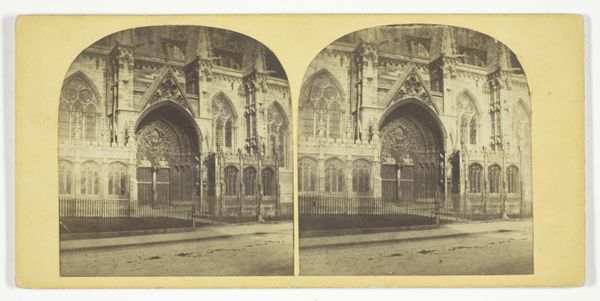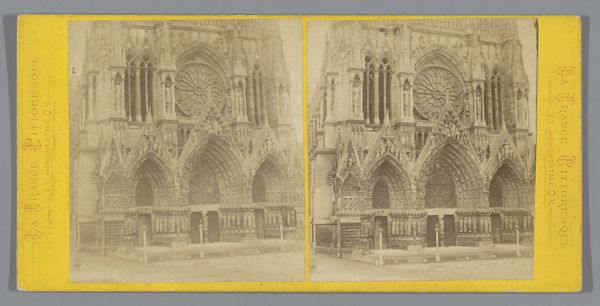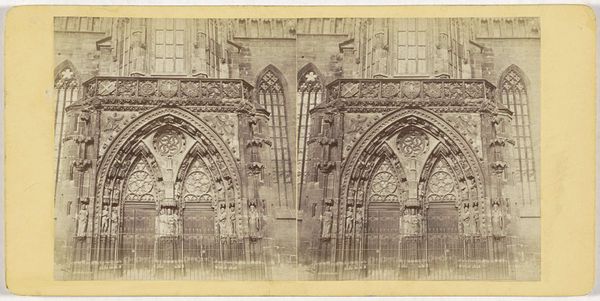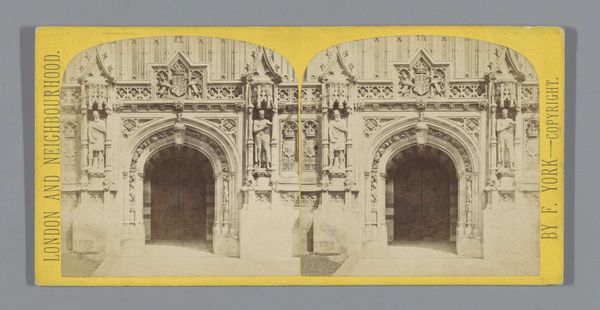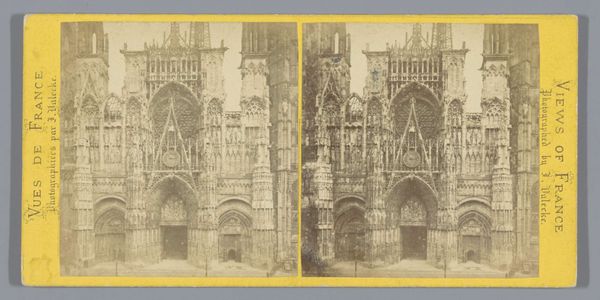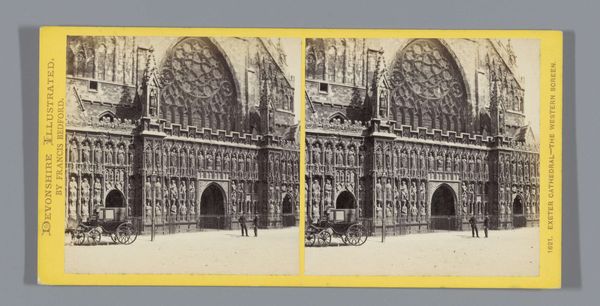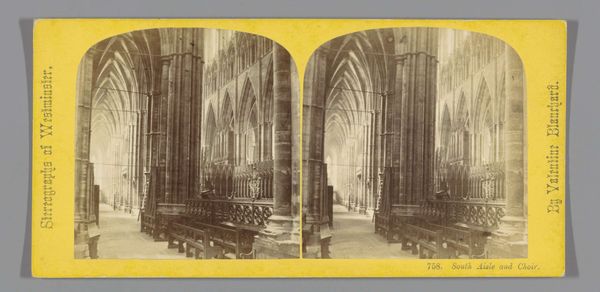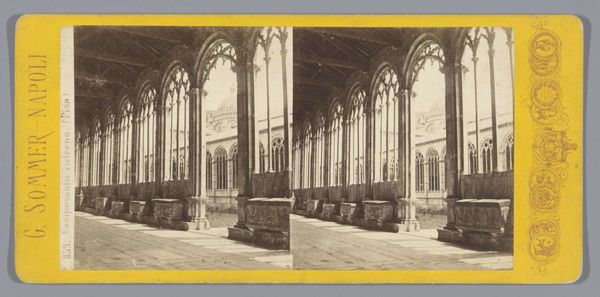
silver, print, photography, site-specific, architecture
#
16_19th-century
#
silver
# print
#
landscape
#
photography
#
geometric
#
site-specific
#
architecture
Dimensions: 8.2 × 7.5 cm (each image); 8.6 × 17.6 cm (card)
Copyright: Public Domain
Curator: Archibald Burns captured this photograph, "Door of Holyrood Abbey," in 1867. What are your immediate impressions? Editor: There’s an austerity to it; a formal rigidity softened by the palpable effects of time and weather. The tones are so controlled, almost monochromatic, lending it a powerful sense of gravity. Curator: Indeed. Burns was photographing a ruin already steeped in history. Holyrood Abbey, founded in 1128, suffered extensive damage during the 16th century and was never fully restored. The site became a potent symbol, open for Burns to then translate and mediate through photography. Editor: Notice how Burns positions the camera to exploit the symmetry inherent in Gothic architecture. The pointed archway is framed almost perfectly. Light becomes a structural element, revealing texture within the stone, accentuating the geometry while adding depth. Curator: This stereoscopic format enhances that depth. It was a popular form in the Victorian era, wasn't it, promising viewers a realistic glimpse into far-off places? Burns capitalizes on this. He invites viewers to virtually step into Holyrood Abbey. Editor: It’s as though the image anticipates the viewer’s gaze and mimics the visual experience of observing such a majestic architectural feature. There’s a kind of intentional doubling that creates a new kind of art. Curator: Exactly, Burns participates in popular trends while memorializing a crucial Scottish landmark, making history accessible to a broader audience in an engaging format. Photography democratized our access to these structures. Editor: Absolutely. In a strange way, through this medium, Burns transforms ruins into permanent aesthetic statements—transcending the bounds of physical presence and, by framing it, suggesting both fragility and endurance, too. Curator: Well, this has reshaped my thinking of 19th-century architecture photographs; it emphasizes accessibility, reminding me how public-facing art was always an option and an intentional part of the artistic tradition. Editor: Agreed, my appreciation for the composition and detail has only deepened. Thanks for that rich discussion!
Comments
No comments
Be the first to comment and join the conversation on the ultimate creative platform.
